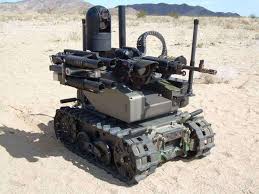Examples of Micro Robots and Tech Gadgets
2024-06-07
Micro robots and tech gadgets refer to small-scale robotic devices and technological innovations designed to perform various tasks and functions in constrained environments or on a miniature scale. These devices leverage advancements in microelectronics, materials science, and robotics to achieve compact size, high precision, and versatility. Here are some examples of micro robots and tech gadgets:
1. Micro Aerial Vehicles (MAVs): MAVs are small unmanned aerial vehicles designed for tasks such as surveillance, mapping, and reconnaissance in indoor or outdoor environments. They often feature compact designs, lightweight construction, and advanced sensors for navigation and control.
2. Microscopic Robots: Microscopic robots, also known as microrobots or nanobots, are tiny robotic devices designed to operate at the microscale (typically on the order of micrometers or nanometers). These robots can perform tasks such as targeted drug delivery, microsurgery, and environmental sensing in biological or industrial settings.
3. Microscale Sensors and Actuators: Microscale sensors and actuators are miniature devices used to measure physical, chemical, or biological parameters and to actuate mechanical components on a small scale. These sensors and actuators enable the development of smart systems for monitoring and control in various applications, including healthcare, automotive, and environmental monitoring.
4. Microscopic Cameras and Imaging Systems: Microscopic cameras and imaging systems are compact imaging devices used for capturing high-resolution images and videos in confined spaces or at the microscale. These systems are used in medical imaging, scientific research, and industrial inspection tasks.
5. Microfluidic Devices: Microfluidic devices are miniaturized systems that manipulate small volumes of fluids (typically in the microliter to nanoliter range) for applications such as chemical analysis, drug discovery, and biological assays. These devices integrate pumps, valves, channels, and sensors on a small chip to enable precise control and manipulation of fluids.
6. Wearable Devices and Smartwatches: Wearable devices and smartwatches are compact electronic gadgets worn on the body to monitor health, track fitness, and provide notifications and communication functionalities. These devices often incorporate sensors, microprocessors, and wireless connectivity to collect and analyze data in real-time.
7. Micro-robots for Medical Procedures: Micro-robots designed for medical procedures, such as endoscopy, minimally invasive surgery, and targeted drug delivery, enable precise control and manipulation in delicate and hard-to-reach areas of the body. These robots can navigate through blood vessels, organs, and tissues to perform diagnostic and therapeutic interventions with minimal invasiveness.
8. Microscale Energy Harvesting Devices: Microscale energy harvesting devices capture and convert energy from ambient sources such as light, heat, vibration, or motion into electrical power for autonomous operation of microelectronics and sensors. These devices enable the development of self-powered systems for remote monitoring and wireless communication in IoT applications.
9. Micro-Robotic Manufacturing Systems: Micro-robotic manufacturing systems utilize small-scale robots and automation technologies to fabricate microscale components and devices with high precision and efficiency. These systems are used in industries such as electronics, semiconductor, and biomedical engineering for microassembly, microfabrication, and micro-machining processes.
10. Microscale Environmental Monitoring Devices: Microscale environmental monitoring devices are compact sensors and systems used to monitor air quality, water quality, pollution levels, and environmental parameters in urban, industrial, and natural settings. These devices provide real-time data for environmental management, pollution control, and public health monitoring.
These examples highlight the diverse range of applications and capabilities of micro robots and tech gadgets in various fields, from healthcare and manufacturing to environmental monitoring and consumer electronics. As technology continues to advance, we can expect further innovations and advancements in miniaturization, mobility, and functionality of microscale devices.



